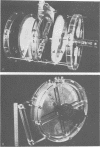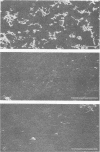Abstract
The survival of natural populations of Escherichia coli and enterococci in sewage was measured in large-volume diffusion chambers in an estuary and a salt marsh. The 5-liter chambers, with polycarbonate membrane sidewalls, were found to be suitable for up to week-long experiments. Decay rates, measured monthly from February to August 1978, ranged from 0.042 to 0.088 h−1 (time for 90% of the population to die = 25 to 55 h) for E. coli and 0.019 to 0.083 h−1 (time for 90% of the population to die = 29 to 122 h) for enterococci and were significantly correlated with temperature. In contrast to the diffusion culture experiments, the decay of E. coli in batch culture did not correlate with temperature. Enterococci survived longer than E. coli in the Narragansett Bay (estuary) experiments, but survived less well in the more eutrophic salt marsh. The effect of light on survival was examined with light/dark experiments and sampling at frequent intervals over the diel cycle. Diel changes in survival were not evident in the Narragansett Bay experiments. E. coli, however, exhibited a diel pattern of growth during the day and death at night in the salt marsh. There was no significant difference in decay rates between light and dark diffusion chambers, nor were decay rates correlated with light intensity. In concurrent batch experiments, survival was significantly greater in the dark for both organisms. These results suggest that the effect of light is complex and that conditions in batch culture may modify the survival of enteric bacteria. Observations made in diffusion chambers may more closely follow the in situ survival of enteric microorganisms.
Full text
PDF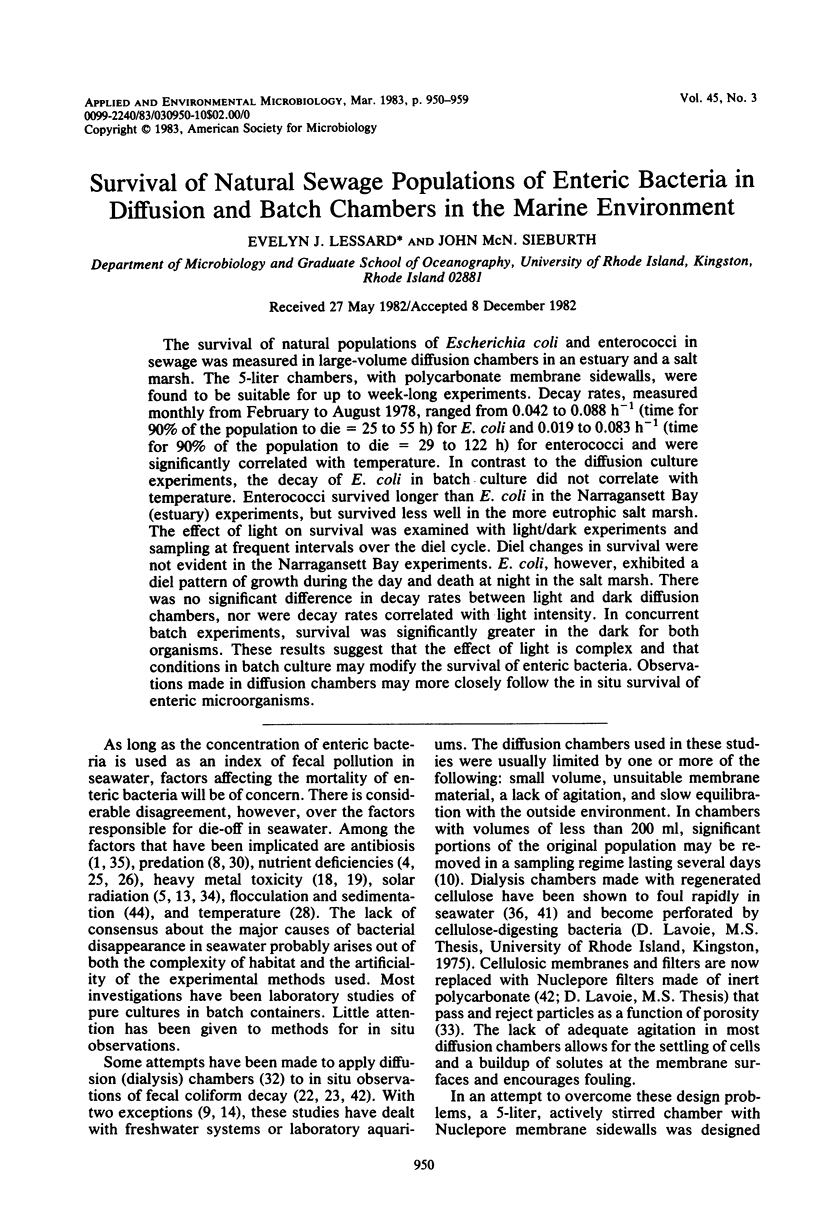

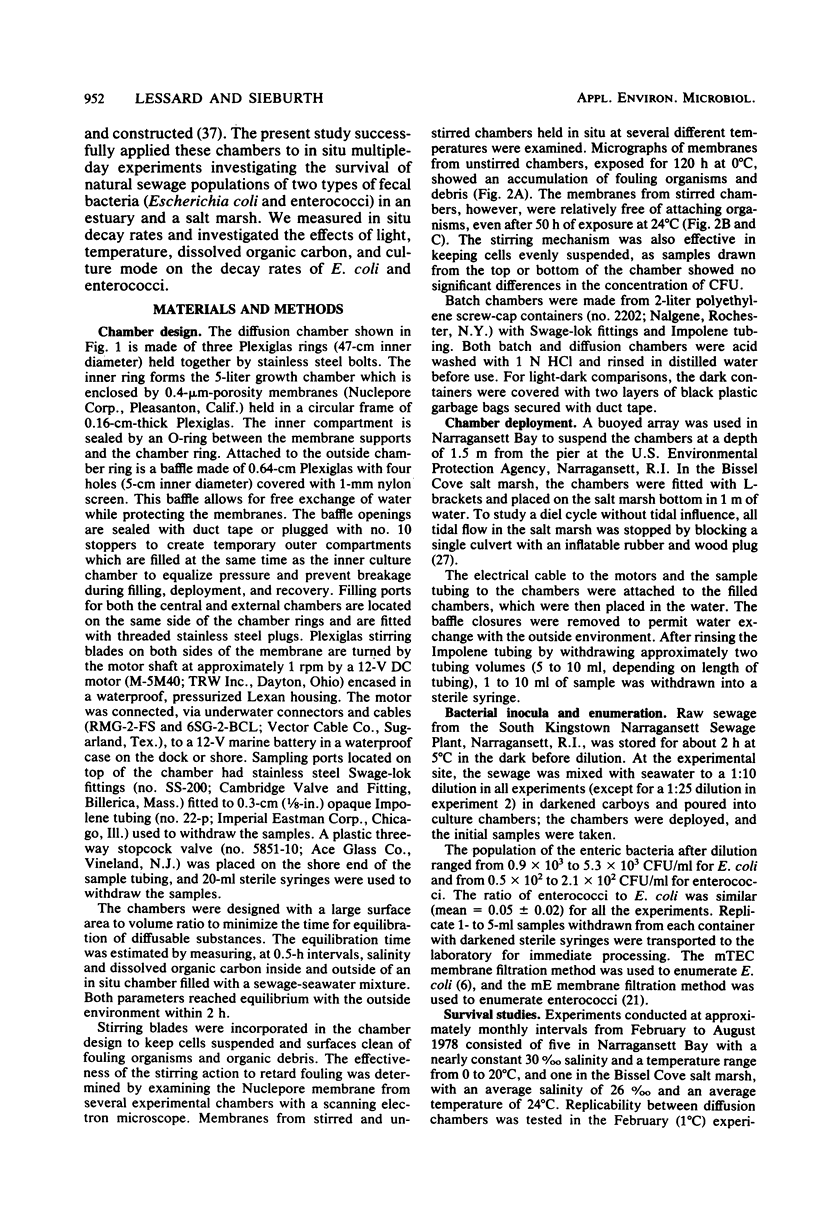
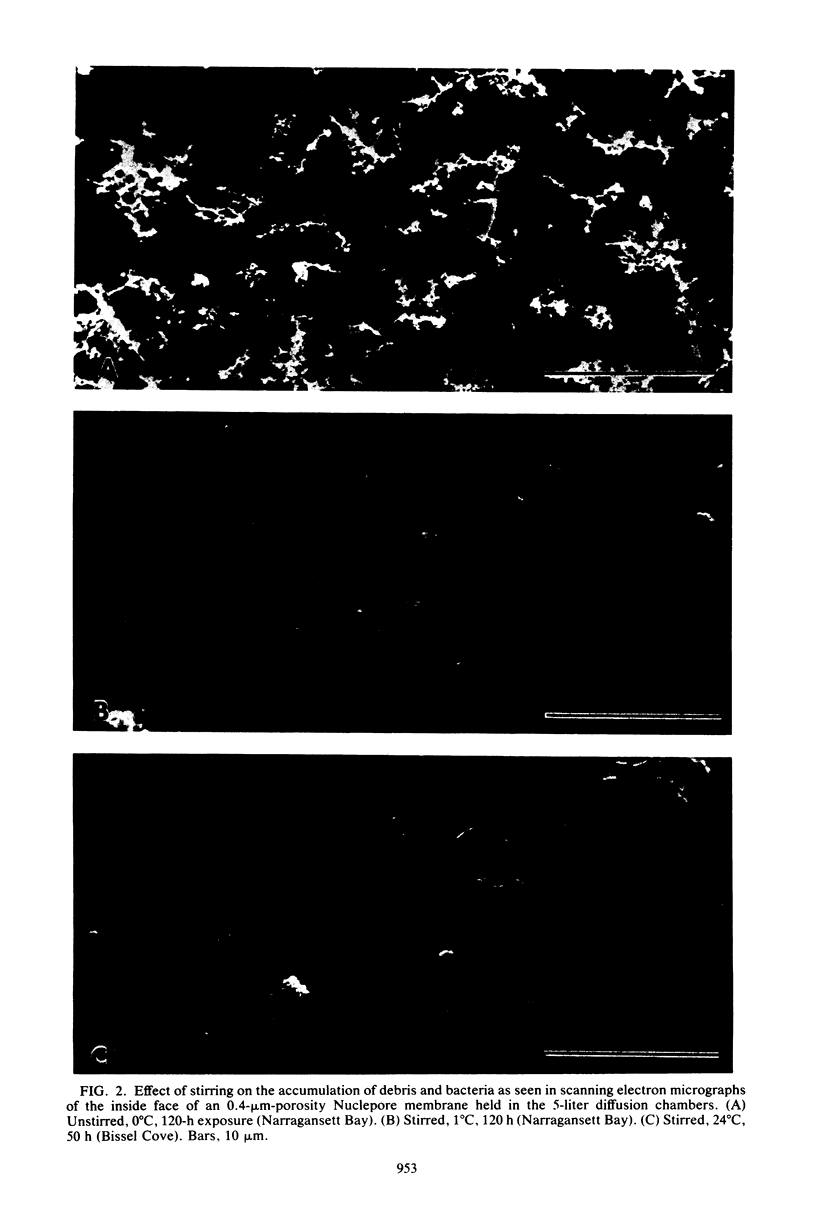

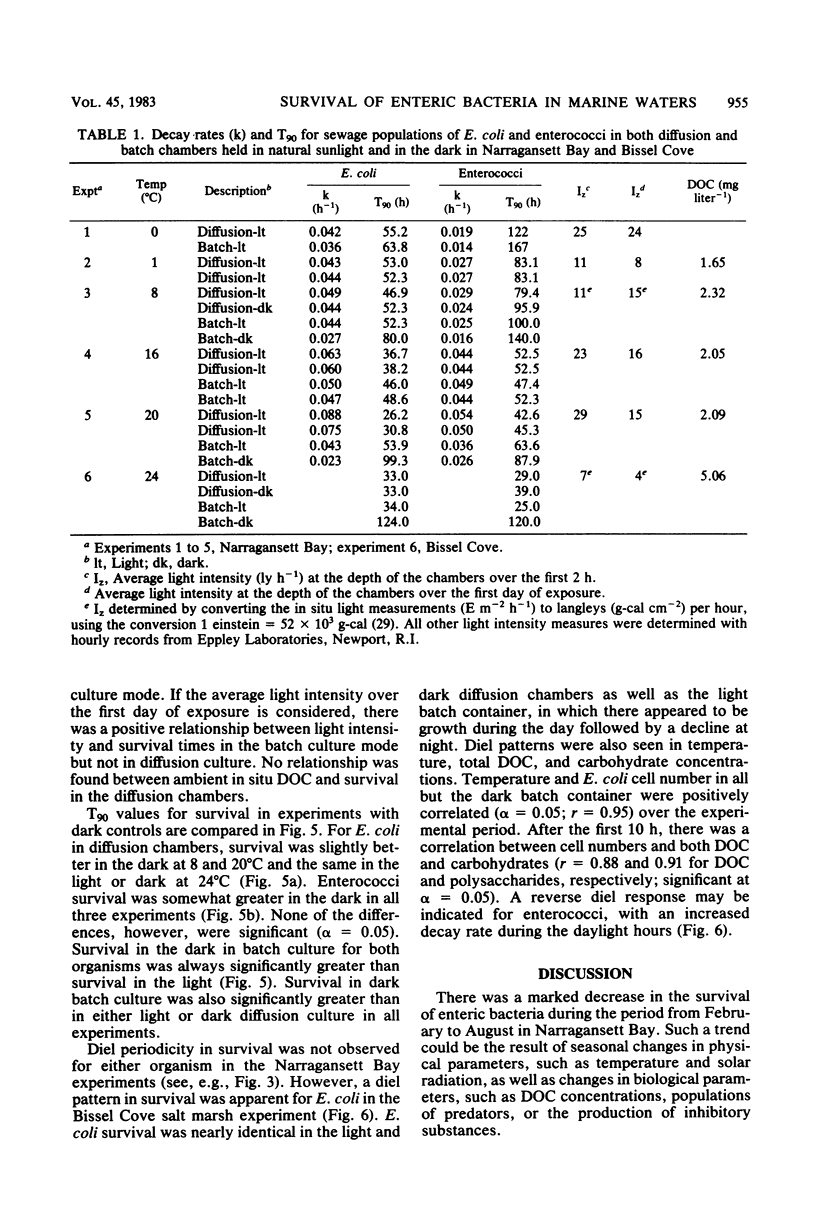
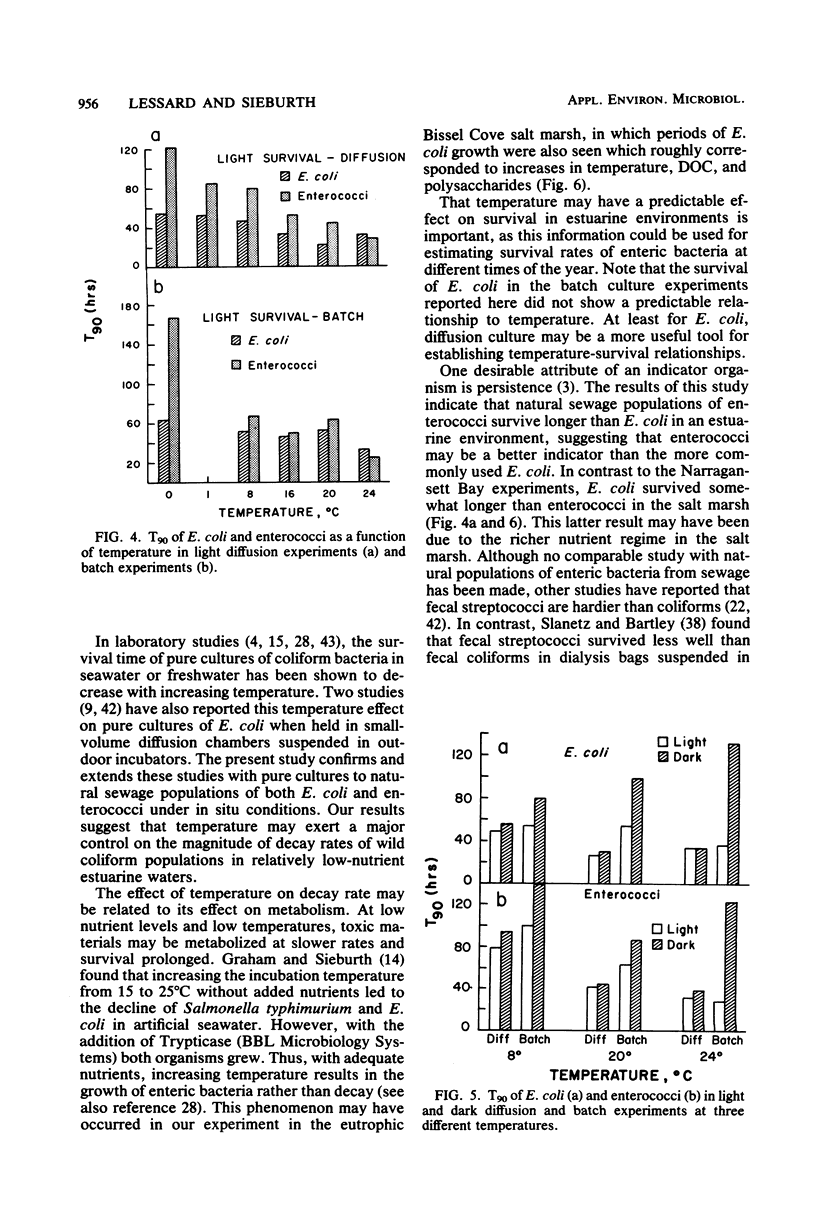


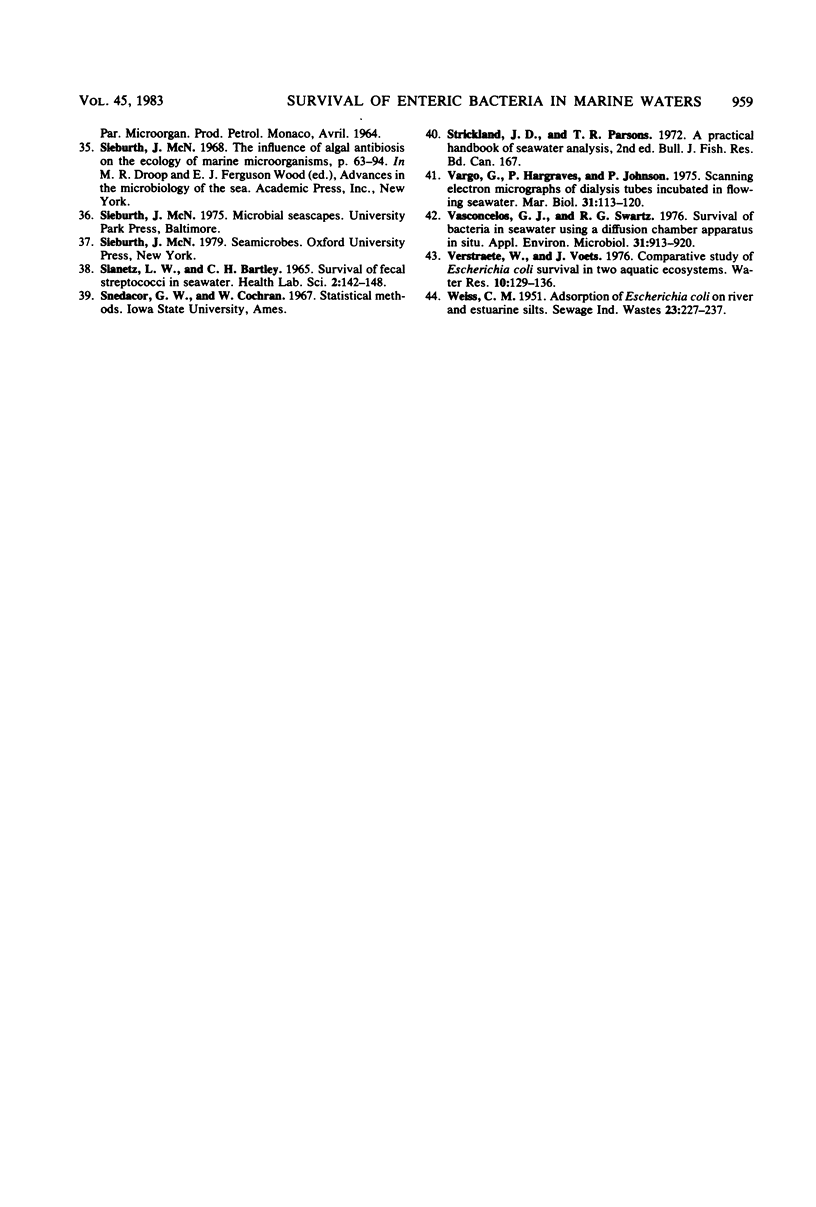
Images in this article
Selected References
These references are in PubMed. This may not be the complete list of references from this article.
- CARLUCCI A. F., PRAMER D. An evaluation of factors affecting the survival of Escherichia coli in sea water. II. Salinity, pH, and nutrients. Appl Microbiol. 1960 Jul;8:247–250. doi: 10.1128/am.8.4.247-250.1960. [DOI] [PMC free article] [PubMed] [Google Scholar]
- Eisenstark A. Mutagenic and lethal effects of visible and near-ultraviolet light on bacterial cells. Adv Genet. 1971;16:167–198. [PubMed] [Google Scholar]
- Emmerson R. W., Jones E. W. Ringed keratolysis of the palms. Trans St Johns Hosp Dermatol Soc. 1967;53(2):165–167. [PubMed] [Google Scholar]
- Enzinger R. M., Cooper R. C. Role of bacteria and protozoa in the removal of Escherichia coli from estuarine waters. Appl Environ Microbiol. 1976 May;31(5):758–763. doi: 10.1128/aem.31.5.758-763.1976. [DOI] [PMC free article] [PubMed] [Google Scholar]
- Faust M. A., Aotaky A. E., Hargadon M. T. Effect of physical parameters on the in situ survival of Escherichia coli MC-6 in an estuarine environment. Appl Microbiol. 1975 Nov;30(5):800–806. doi: 10.1128/am.30.5.800-806.1975. [DOI] [PMC free article] [PubMed] [Google Scholar]
- Fliermans C. B., Gorden R. W. Modification of membrane diffusion chambers for deep-water studies. Appl Environ Microbiol. 1977 Jan;33(1):207–210. doi: 10.1128/aem.33.1.207-210.1977. [DOI] [PMC free article] [PubMed] [Google Scholar]
- Jagger J. Effects of near-ultraviolet radiation on microorganisms. Photochem Photobiol. 1976 Jun;23(6):451–454. doi: 10.1111/j.1751-1097.1976.tb07279.x. [DOI] [PubMed] [Google Scholar]
- Levin M. A., Fischer J. R., Cabelli V. J. Membrane filter technique for enumeration of enterococci in marine waters. Appl Microbiol. 1975 Jul;30(1):66–71. doi: 10.1128/am.30.1.66-71.1975. [DOI] [PMC free article] [PubMed] [Google Scholar]
- McFeters G. A., Bissonnette G. K., Jezeski J. J., Thomson C. A., Stuart D. G. Comparative survival of indicator bacteria and enteric pathogens in well water. Appl Microbiol. 1974 May;27(5):823–829. doi: 10.1128/am.27.5.823-829.1974. [DOI] [PMC free article] [PubMed] [Google Scholar]
- McFeters G. A., Stuart D. G. Survival of coliform bacteria in natural waters: field and laboratory studies with membrane-filter chambers. Appl Microbiol. 1972 Nov;24(5):805–811. doi: 10.1128/am.24.5.805-811.1972. [DOI] [PMC free article] [PubMed] [Google Scholar]
- SCARPINO P. V., PRAMER D. Evaluation of factors affecting the survival of Escherichia coli in sea water. VI. Cysteine. Appl Microbiol. 1962 Sep;10:436–440. doi: 10.1128/am.10.5.436-440.1962. [DOI] [PMC free article] [PubMed] [Google Scholar]
- SLANETZ L. W., BARTLEY C. H. SURVIVAL OF FECAL STREPTOCCOCCI IN SEA WATER. Health Lab Sci. 1965 Jul;2:142–148. [PubMed] [Google Scholar]
- Schultz J. S., Gerhardt P. Dialysis culture of microorganisms: design, theory, and results. Bacteriol Rev. 1969 Mar;33(1):1–47. doi: 10.1128/br.33.1.1-47.1969. [DOI] [PMC free article] [PubMed] [Google Scholar]
- Vasconcelos G. J., Swartz R. G. Survival of bacteria in seawater using a diffusion chamber apparatus in situ. Appl Environ Microbiol. 1976 Jun;31(6):913–920. doi: 10.1128/aem.31.6.913-920.1976. [DOI] [PMC free article] [PubMed] [Google Scholar]



